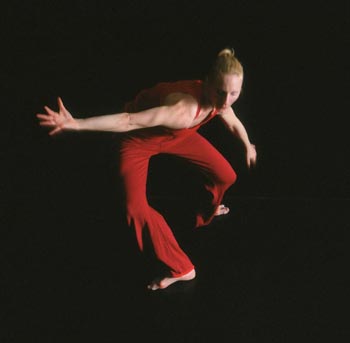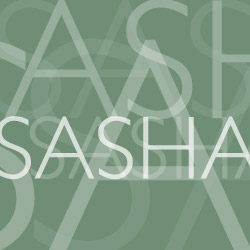
In addition to my considerable experience as a dance artist, over the past 20 years I have immersed myself in the study of Aikido and Kashima Shinryu swordsmanship – two Japanese martial arts. My passion for these arts has taken me to Japan on several occasions, including in 2007 when I was awarded The Lisa Ullman Travel Scholarship to attend The Shiseikan Dojo at Meiji Jingu, Tokyo to study with Minoru Inaba, one of the most highly acclaimed masters in Japan. My long-term research in martial arts has informed my understanding of fundamental issues pertaining to somatic knowledge and has had a profound influence on my approach to the teaching of dance. I have augmented these substantive experiences with other complementary studies such as in Yoga and The Feldenkrais Method and woven these into the fabric and substance of my teaching. The confluence of these rich streams of knowledge into one integrated body of experience gives my teaching an unconventional yet cohesive originality. No other dance teacher, I am aware of, shares this combination of knowledge, skills and experience.
“Sasha incorporates all of her wide knowledge and experience in her teaching (gained from various backgrounds such as aikido and dance) which results in her own unique style or technique.”
Leila Bahktali – LCDS student
I create original material for my classes designed to engage the imagination of the students and utilise varied structures and learning strategies to entice them into a sophisticated process of self-exploration. My aim is to encourage and facilitate student learning by introducing them to processes and skills through which they can evolve artistic pathways and personal developmental ambitions of their own.
The impact of my work is evidential in the feedback from colleagues and students who see it as fundamentally transformational.
“In Sasha’s classes I found myself learning not just a dance technique but a way of being somehow.”
Marta Massiero – LCDS BA3 student
Promoting and Enhancing the Student Learning Experience
Working with the students of LCDS, my aim is to cultivate reflective, discerning and creative thinkers, assured in their somatic knowledge. Drawing upon my previous teaching experience with established companies and in vocational schools, together with my professional practice as an international performance artist, I am uniquely well placed to understand the challenges and requirements of the dance profession. However, rather than merely preparing them for existing companies, I look upon my students as potential innovators and leaders in their chosen art form.
Rather than prescriptive acquisition of established vocabulary or form, I aim to promote and support enquiry.
“Though it is complex and is a distinguishable technique, the approach to the work and the way in which it is practiced is fundamentally of more importance than the recognizable form we see.”
BA3 student LCDS

Identifying and Managing Students’ Learning Needs
An Overview of My Approach to Release-based Dance Practice
Almost without exception students entering my classes hold their bodies with undue superficial tension, breathe shallowly and, surprisingly, have little or no awareness of their own sensate presence. To begin with, they find it difficult to concentrate on and to recognise fluctuations in sensorial information generated by their own bodies. Tragically, they have previously been persuaded not to trust their own judgement or feeling. Consequently, they find it difficult to perceive themselves moving other than via an acquired vocabulary and through visual recognition of their external form (in the studio mirror!). Gradually, through the mindful sensory explorations we undertake, through choreographed sequences, partnered hands-on work and discussion, the students begin to build a three dimensional sense of themselves. This proprioceptive awareness, and an understanding of how breath supports and informs movement quality, enables the students to tackle the challenges of the complex and dynamic sequences I go on to develop for them.
I encourage them to be intrigued by their own bodies in motion, by their structure, the functionality of movement, the endless possibilities for articulated pathways through the body and the capacity to cultivate intelligence through sensation.
“Moving from the bones, muscles and breath allows you to explore different movement possibilities that develop a greater understanding and awareness of the body and oneself. Doing repetitive movements (e.g. stirring the body) allowed me to discover places in the body that I was never so aware of and ‘body states’ I never experienced before.”
Leila Bahkari – LCDS student
Beyond this, I encourage the students to see their endeavours and ambitions in dance as integral to their overall personal development and to reflect on the social relevance of their art. They leave with an enhanced sense of authorship of their own experience and greater assurance of themselves as evolving dance artists.
“……your technique has a methodology and philosophy which is essential to the form and remains a constant. It encompasses a set of beliefs that are integral to the practice, these beliefs are not related to any spiritual meaning but are more related to state of being, a body mind relationship, similar in some senses to a meditative practice.”
BA3 student LCDS

Pedagogical Approach
Because most students arrive with little sensate awareness, they are unreflective about the rich inner world that is so informative of expression and tend to perceive their bodies as aesthetic structures. My initial approach is to raise awareness and arouse curiosity in students in preparation for developing a strong foundation of physical and interpretive skills. I do this by introducing students to fundamental elements of my methodology which causes them to reflect on their own habitual usage and previously learned patterns.
I build short phrases of movement executed either lying on the floor or moving in close proximity to the floor. These phrases fold and extend the body while maintaining a tactile connection between the floor and shifting surfaces of the body, creating a sensory cartography of the body’s surface. By stirring the body at ground level and facilitating movement with conscious use of the breath we can examine how weight can be shifted internally, shedding the shell-like perception of body/self which the students arrive with. This floor work induces a meditative state which allows the students to focus on subjective recognition essential to building a more detailed proprioceptive self-image.
Having tuned the students in to a more reflective state in the floor-work, I construct original standing phrases, which challenge conventional notions of controlling the body. Instead, I ask students to see themselves in a constant state of flux “listening in” to how the body naturally falls, threads through pathways and realigns itself through a continuum of weight shift.
“We observe what patterns, sensations and shifts occur in the body, triggered by different stimuli.
Awakening connectivity through the whole of the body in order to be able to move/dance to your fullest extent.
Besides ‘doing’, there is a lot of room for ‘observing’ and ‘allowing’.”
Leila Bahkari – BA3 student LCDS
Gradually, over a period of a term, I choreograph complex and dynamic sequences of movement to both inform and challenge the students. Where they struggle to resolve connections in articulation, I refer them back to the sensory and reflective resources we have built into the methodology, encouraging them to take charge of the problem solving as part of the learning process.
I bring in to the studio, books on anatomy and model skeletons to inform the students of anatomical facts and to disabuse them of disinformation previously acquired where dance aesthetics have clouded physiological functionality. I also encourage the students to use the anatomical images to further inform their mapping of their bodies and to gain an enhanced three dimensional sense of themselves. I read from works on dance by Miranda Tufnell and Jonathan Burrows and from writers such as Jeannette Winterson in order to stimulate critical appraisal of dance developmental processes and to feed their imaginations.
“Sometimes Sasha reads some texts or quotes which informs and inspires the rest of the class. Bringing in the skeleton or anatomy books into the studio to study the bone structure gives a clearer understanding of the spaces inside the body and body function. Making drawings of the movement phrases allows you to observe the movements from a different perspective and can function as a useful movement score. Bringing in all those different elements into class creates a richer source to draw upon when discovering/studying dance.”
Leila Bahkari – LCDS student
Inspired by outdoor sessions I have experienced during martial arts seminars, I encourage the students to see themselves as part of nature and to draw inspiration from natural phenomena.
Energetic states can be conjured up in the imagination to imbue movement with things elemental.
I have taken students out of the studio on silent outdoor walks, along streets and into parks, with the aim of opening their senses and embracing these experiences in how they conceive of dance.
This multi-faceted and cross curricular approach is highly unconventional in the teaching of dance technique and something which I have developed with careful consideration, based on a wealth of experience and personal research. Through my approach to teaching and learning I hope to dispel the studio-bound mind-set of “training” and open the minds of the students to a broader sense of education, self-development and purposeful living through the art of dance.
“Already as a result of this term I am becoming less interested in doing things the “right” or “correct” way. I now have the option of individuality.”
Andrew Macleman – BA2 student LCDS